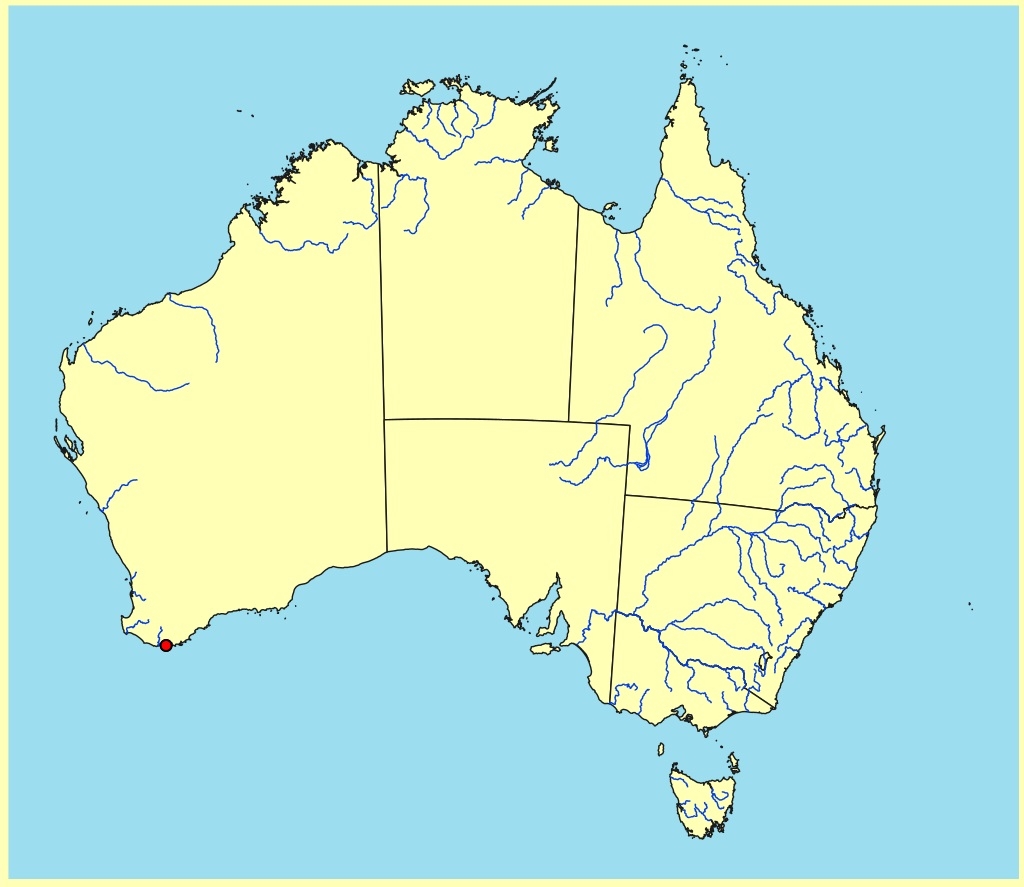Eucalyptus | Symphyomyrtus | Bisectae | Destitutae | Falcatae | Rugatae
Euclid - Online edition
Eucalyptus goniantha subsp. kynoura
Eucalyptus goniantha
subsp. kynoura D.Nicolle & M.E.French, Nuytsia Vol. 22 (6) 138-9 (2012).T: south-west of Denmark, Western Australia [precise locality withheld for conservation reasons], 28 January 2001,D.Nicolle 3759& M.E.French (holo: PERTH 05810647;iso: CANB).
Stunted mallee to 1 m tall. Forming a lignotuber.
Bark grey to brown, smooth throughout.
Branchlets square but not winged, not glaucous; lacking oil glands in the pith.
Juvenile growth (coppice or field seedlings to 50 cm): not seen.
Adult leaves alternate, petioles 1–1.5 cm long; blade lanceolate, 7–10 cm long, 1.5–2.4 cm wide, base tapering to petiole, margin entire, apex acute, glossy, dark green, side-veins at an acute or wider angle to midrib, reticulation dense, intramarginal vein fairly close to margin, oil glands ? intersectional.
Inflorescence axillary unbranched, peduncles spreading to weakly down-turned, angular, 1–1.2 cm long, buds ?7 or more per umbel, pedicels angular (pedicels 0.3–0.6 cm long). Mature buds vaguely ovoid (ca 1.5 cm long, 1.0 cm wide), strongly ribbed (corrugate) on hypanthium and operculum, creamy in colour, scar present (outer operculum presumed shed early), operculum contracted to a stout beak which is angled or ribbed and blunt, stamens presumed to be inflexed but buds not dissected yet, locules 3 or 4, the placentae each with 4 vertical rows of ovules. Flowers creamy to yellowish.
Fruit pedicellate (0.3–0.6 cm long), truncate-globose to hemispherical, conspicuously ribbed or corrugate, 0.9–1.0 cm long, 1.0–1.2 cm wide, rim thick, disc descending obliquely, valves 3 or 4, exserted but fragile.
Seeds not seen.
Cultivated seedlings (measured at ca node 10): cotyledons Y-shaped (bisected); not grown yet.
Flowering has been recorded in January.
In the classification of Brooker (2000) Eucalyptus goniantha belongs in Eucalyptus subgenus Symphyomyrtus section Bisectae subsection Destitutae because buds have two opercula, cotyledons are Y-shaped and branchlets lack oil glands in the pith. Within this subsection E. goniantha belongs to a group of ten species and three subspecies characterised by usually pendulous inflorescences with pedicellate ovoid buds with a conical to beaked operculum, truncate-globose fruits with exserted fragile valves and adult leaves that are green, densely reticulate and have numerous intersectional oil glands. The species are the mallets E. falcata, E. ornata, E. purpurata, E. recta, E. rugulata and E. annettae; and the mallees E. dorrienii, E. petrensis, E. ecostata and the newly described E. opimiflora, plus the coastal and sub-coastal mallees E. goniantha (with two subspecies), E. kessellii (with two subspecies), E. notactites and E. semiglobosa. These mallets and mallees together form series Falcatae subseries Rugatae, albeit in a form somewhat modified from Brooker's classification.
E. goniantha is most likely to be confused with E. notactites but the latter has glaucous branchlets that are also winged, and sessile to subsessile buds virtually un-ribbed. E. goniantha and E. kessellii may also be confused. Both species have stout, coarsely but shallowly ribbed buds, never finely ovoid in overall shape as in E. dorrienii, E. costata, E. opimiflora or E. petrensis, nor are the umbels gracefully pendulous. E. kessellii has broadly diamond-shaped buds in umbels of three or seven on rigidly down-turned flattened peduncles. E. goniantha has erect to spreading umbels of seven to > 11 ovoid buds on flattened to narrowly angular peduncles. The surface of buds of both these species is noticeably cream-coloured at maturity. Larger plants of both E. goniantha and E. kessellii may be small trees with basal rough bark, with that of the latter being harder and darker. Both species have a southern coastal and subcoastal distribution. E. goniantha differs from E. semiglobosa in the buds which are conspicuously short globular and unbeaked in the latter.
Other species in subseries Rugatae, viz. E. falcata, E. purpurata, E. rugulata, E. recta and E. ornata, are all tall mallets from the wheatbelt or nearby, and are easily distinguished from E. goniantha by the finely tapering conical/beaked opercula.
There are two subspecies:
E. goniantha subsp. goniantha
The opercula are elongate and thickly beaked, buds and fruit only slightly ribbed . It occurs between Manypeaks and Hassell Beach north-east of Albany on coastal sands.
E. goniantha subsp. kynoura
The buds and fruit are conspicuously corrugate or ribbed with the buds having an operculum with a thick blunt long beak. Only known so far from one bleak headland south-west of Denmark.
[note that E. goniantha subsp. notactites is now regarded as a species, viz. E. notactites.]






